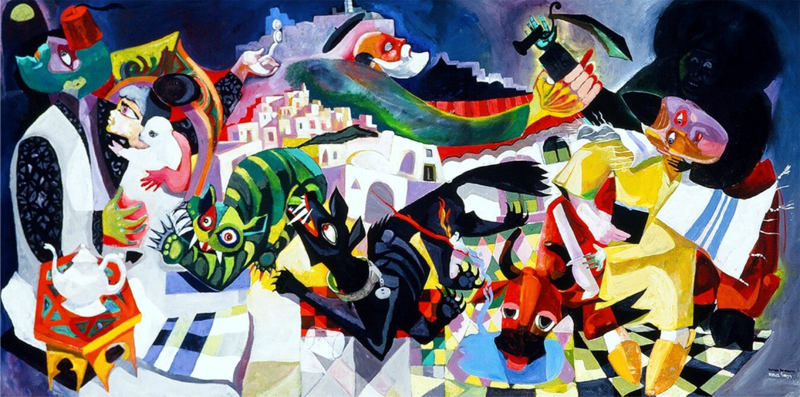
The Raphael Bouganim Scholarship in Studio Arts Excellence
The intention of the Raphael Bouganim Scholarship is to establish a legacy in memory of artist Raphael Bouganim in the studio arts program at FAU. Established by Dan Bouganim to honor the many and diverse artistic accomplishments of his late father, a life-long studio artist whose creative endeavors included painting, sculpture, drawing, book illustrations and more, the intent of this fund is to support deserving students with financial need to follow their dreams in pursuing a career as a working artist or related creative industries. Two art majors at the sophomore level will receive an ongoing support award in the amount of $2500 per year through the remainder of their degree. The student is expected to demonstrate progress and dedication to becoming a professional artist. The media areas are limited to: Painting, Drawing, Sculpture, Ceramics and Photography.
About Raphael Bouganim
Raphael Michael Bouganim was born March 15, 1939, in Mogador (now Essaouira), French Morocco, an Atlantic seacoast town known for its picturesque walled fort. Three cultures, Moroccan Muslim, Jewish, and French colonial, coexisted there, interacted, yet remained distinct. Rafi was the sixth child of Rabbi Yamin Bouganim, a highly respected rabbi and Bet Din judge, and Sol Amar Bouganim. He joined a family where Sephardic Judaism permeated every aspect of life. Weekly rhythms culminated in the Sabbath; holidays punctuated the year, and myths were real. Rafi's childhood was thrown into chaos at age seven, when his father died unexpectedly and he soon found himself living in Casablanca with his older sisters.
Soon after, as part of the settlement of the new state of Israel, officials from Youth Aliyah chose him, among other promising Moroccan children, to be "saved" by "aliyah" to Israel. After a period of orientation in France and Norway, he was settled in 1950 on Kibbutz Afikim. Rafi resisted kibbutz routines, but his artistic talents were obvious, so the kibbutz "apprenticed" him to Leo Roth, their member artist. In a next step, the kibbutz sent Rafi to Jerusalem to study at Betzelel, Israel's premier art school. At sixteen, he was its youngest student.
Meanwhile, his mother, now living with the rest of her children in Casablanca, had become gravely ill. He had to renounce his Israeli citizenship to reenter Morocco to see her. He found it a changed place. Growing nationalism following the French pullout had resulted in severe restrictions and harassment of Jewish citizens. By 1956, the pressure to leave was irresistible. Jews fled to Israel, France, Canada and the United States.
Rafi's older brother David had become a U.S. citizen, so he sponsored Rafi and he settled in New York City, where Rafi attended the Art Students' League and worked in animation advertising. He then attended Gratz College and Temple University in Philadelphia and eked out a living as a Hebrew school teacher, supplemented by a few commissions. He then held a full-time position at Beth Sholom Congregation as artist-in-residence and teacher. Soon after he designed two sets of stained glass windows for their education building adjoining the Frank Lloyd Wright-designed synagogue.
In the summer of 1968, along with his wife Hara and son Daniel, he moved to Massachusetts and soon began painting full-time where he also illustrated numerous textbooks and articles, including dozens of issues of Psychiatric Opinion magazine.
Between 1969 and 1986, Raphael Bouganim held eleven one-man shows. These included two at Gratz College, Philadelphia, two at Beth Sholom Congregation, Melrose Park, Pennsylvania, Spertus College of Judaica, Chicago, and Brandeis University, Waltham, Massachusetts, and shows at Jewish community centers or synagogues in Harrisburg and Philadelphia, Pennsylvania, Framingham and Worcester, Massachusetts, and the last in Baltimore, Maryland. His works hang in Spertus College, Beth Sholom Congregation, and Gratz College, as well as in numerous private collections in the United States and Israel. After a long illness, he died in Marlboro, Massachusetts on February 4, 1994.
His subject matter varied from often-painted Biblical and Talmudic themes, to memories of Israel, Chassidic life, a few portraits, and scenes in America. The brilliant colors, details and floating dream-like images swirl into life. He has been called, "the Moroccan Chagall."